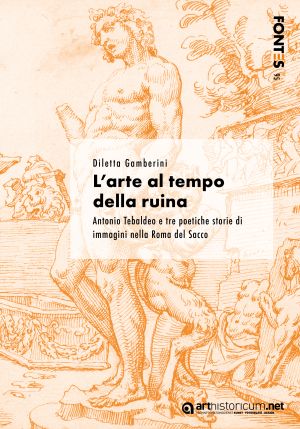
Zitationsvorschlag
Lizenz

Dieses Werk steht unter der Lizenz Creative Commons Namensnennung - Weitergabe unter gleichen Bedingungen 4.0 International.
Veröffentlicht
Downloads
L’ arte al tempo della ruina
Antonio Tebaldeo e tre poetiche storie di immagini nella Roma del Sacco
Der vorliegende Beitrag konzentriert sich auf drei bisher unveröffentlichte Sequenzen neulateinischer Epigramme, die das Schicksal dreier Kunstwerke während der Plünderung Roms (Mai 1527-Februar 1528) poetisch aufarbeiten. Die Texte wurden von einem unmittelbaren Zeugen der Gewalttaten verfasst, die die Stadt in jenen Monaten erschütterten, dem ferraresischen Dichter Antonio Tebaldeo, und sie tragen dazu bei, das intellektuelle Profil eines Autors zu erklären, der ein tiefes und anhaltendes Interesse an den Künsten seiner Zeit hatte. Das wichtigste Ergebnis der Untersuchung ist jedoch ein anderes. Durch einen systematischen Vergleich mit den Schriften anderer Humanisten, die sich zur Plünderung geäußert haben, werden diese Epigramme in einen Kontext gestellt, der bisher unbekannte Ereignisse beleuchtet, in die ein illustrer Kreis aus Mäzene, Künstler und Objekte der Stadt Roms unter Papst Clemens dem Siebten involviert waren, sowie eine Episode der Profanierung, die zu jener Zeit eine große literarische Resonanz fand. Die Studie erläutert insbesondere, wie Tebaldeo in diesen Gedichten das Schicksal eines Porträts von Ferrante Gonzaga heraufbeschwört, das der junge kaiserliche Hauptmann als Geschenk für seine Mutter, Isabella d'Este, in Auftrag gegeben hatte, aber auch die Schändung eines Gemäldes der Madonna mit Kind durch einen spanischen Soldaten und schließlich einige bis dahin völlig unbekannte Verwicklungen, die Michelangelos Bacchus betrafen.






